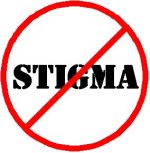Whichever side of the fence you’re on, we can all agree that there is undoubtedly a stigma attached to the person who finds him or herself abusing alcohol or drugs. We all do it; the homeless person sitting outside a 7-11 asking for change, the man whose teeth have decayed past the point of no return, or even the guy behind us at the supermarket whose only purchase is a 500 ml bottle of whiskey. In our last post, we talked about how a ridiculously high number of Americans drink too much—even if they aren’t alcoholics. A phenomena that can be likened to any other culprit of mass effecting (fast food comes to mind), what we’ve come to understand is that the problem is rooted in a combination of overexposure, availability, and stigmatism.
A recent editorial in the Journal of Psychopharmacology published on Medical News Today outlines some ways in which individual and government intervention (we’ll only be going over the latter) can reduce the personal and public costs of senseless drinking:
- ” Minimum pricing of alcohol would reduce consumption of cheap alcohol, especially in young people.
- Labeling the amount of alcohol grams, much like food labeling, would allow consumers to track the exact amount of alcohol they are consuming.
- Limiting the times and places alcohol can be purchased will make impulse buying, particularly when drunk, much harder and make it easier for people with alcohol-use problems to avoid contact with alcohol in shops and supermarkets.
- Providing treatment can provide significant health benefits to individuals and society and should be offered to all people with an alcohol dependence problem.
- Investing in research can develop new approaches to addiction. Techniques using genetics and neuroimaging will optimize and build on current research. Pharmaceutical investment in alcohol treatments is minimal and should be revitalized by government incentives.
- Developing alternatives to alcohol by investigating the possibility of new drugs that mimic the milder effects of alcohol. An alternative substance that could simulate relaxation without the negative side effects would reduce public health and social costs from alcohol-related damage.”
Scientist and co-author David Nutt, Neuropsychopharmacologist from Imperial College London and Vice President of the European Brain Council, adds:
” The combination of individual and societal approaches would likely have major beneficial impact on health effect and social harms due to alcohol, and reduce alcohol-attributable mortality especially in younger ages. The proposed approach would also reduce the stigma currently associated with alcohol use disorders and thus enable earlier and more interventions.”
What do you think? Could these approaches help? Is stigmatism holding people back who might otherwise seek out help from a family member or a treatment facility?








